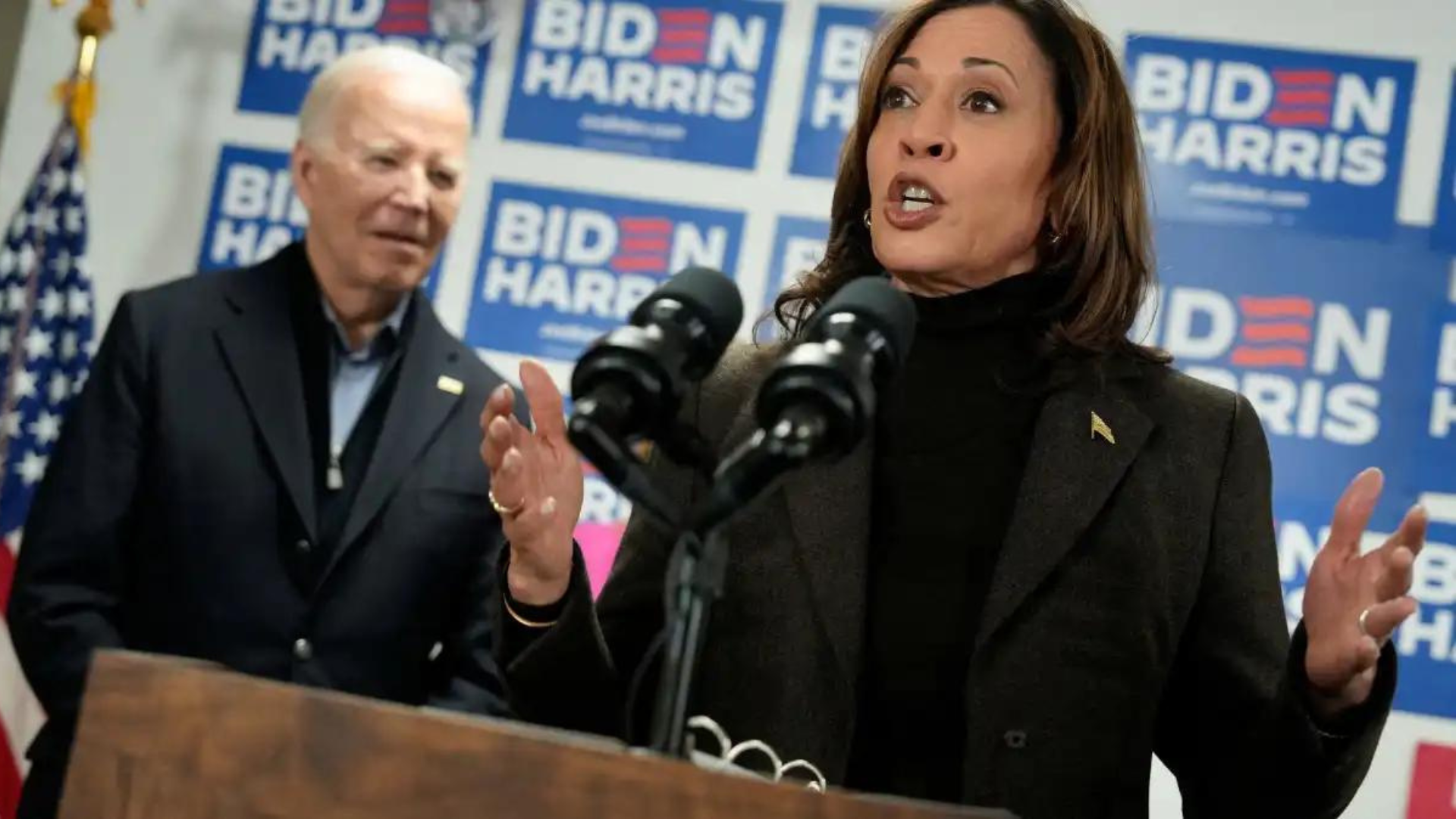
Published 22/07/2024 22:33 | Edited 23/07/2024 08:36
Under mounting and increasingly embarrassing pressure, US President Joe Biden will no longer run for re-election to the White House. The withdrawal paves the way for Vice President Kamala Harris to inherit the Democratic Party’s nomination and challenge former President Donald Trump in the November 5 election.
Polls of voting intentions that have already tested the likely confrontation point to a balanced scenario, with a slight advantage for the Republican Party candidate. According to CNN – which compared six national surveys conducted since the end of June – Trump has, on average, 48%, against 47% for Kamala.
Although the former president cannot be declared the favorite – despite his much more advanced and consolidated candidacy – the feeling is that the Democrats have gained an electoral lifeline. The timing of the announcement of Biden’s withdrawal seemed right: the news, which until then had been focused on issues favorable to Trump (or negative for the Democrats), changed immediately.
Women’s vote
One of the good news for the party was the record volume of donations to Kamala in the first 24 hours after the release of the letter in which Biden made public his withdrawal. In a show of competitiveness, the vice president raised US$81 million (equivalent to approximately R$450 million). Of the 888 thousand donors, around 60% had never donated funds to an election campaign.
It’s a good starting point for the “Kamala brand,” which needs to consolidate itself before the Democratic National Convention, scheduled for August 19. But in such a tight election, there will be no shortage of lobbies for her candidacy’s focal points. A 59-year-old black woman, successful in the legal and political fields, has new attractions to showcase.
The female vote – especially in a race against Trump – will certainly be a priority. Four years ago, when she was officially declared the first female vice president-elect of the United States, Kamala dedicated part of her victory speech to American women. “I may be the first woman in this office, but I will not be the last. Every little girl watching us today will see that this is a country of possibilities,” said the Democrat in Wilmington, Delaware, on the evening of November 7, 2020.
That’s Biden
However, over the course of more than three years as the White House’s number 2, Kamala has avoided issues related to inclusion, such as that related to immigrants. Even though she is the daughter of a Jamaican and an Indian who met in the United States and pursued careers in academia, the vice president has preferred to ignore the issue – which could cost her crucial votes. Her nomination as a candidate is an opportunity for her to reconsider her inaction.
But no decision will be more complex than assessing the extent to which Joe Biden should participate in the election race. In four years, the president’s capital has shrunk dramatically. In 2020, he won the primaries in a resounding fashion and, throughout the campaign, proved that he is the only Democratic candidate capable of defeating Trump.
In the White House election with the highest voter turnout in American history, Biden garnered 81.2 million votes – a monumental record. However, Trump, even in defeat, saw his performance jump from almost 63 million votes in 2020 to 74.2 million in 2024. There was no room for a more progressive alternative, such as Senator Bernie Sanders, from the “left” of the Democratic Party, to defeat him.
Dream opponent
Four years later, the tide has turned. Biden was Trump’s dream opponent in 2024 — and much of that was due to the modest and controversial legacy of his administration, as well as the president’s public missteps. In his quest for reelection, no one has played Biden harder than Trump himself.
The overt involvement of the US in the war in Ukraine and in the genocide promoted by Israel in Gaza, the ineffectiveness of its trade offensive against China, the poor economic results – all of this weighs against the current incumbent in the White House. The weak discourse, lacking new and bold commitments after four years in power, also counts.
Added to this was her poor performance in the first and only national debate against Trump, in addition to the succession of gaffes in public statements. To what extent is Biden’s presence – to use a fashionable term – “toxic” for Kamala? How can she claim the advances of the administration without being contaminated or scorched by the president’s endless controversies?
Perspectives
Finding this middle ground is perhaps the main challenge for the imminent Democratic candidate. Just as there was a broad and democratic front in Brazil in 2022 to prevent Jair Bolsonaro from remaining in power, Kamala’s challenge is to raise awareness among American voters and build a broad front against the return of a coup-plotting and anti-democratic far-right to power.
Biden was unable to make this front viable. Kamala, a low-profile, inconspicuous vice president, was called on the mission. The US – as we know – usually elects a president with or without whom the system remains as it is. Of the major economies, the US is perhaps the only one in which, due to the strength of the establishmentno head of state can change this order of events.
In a confrontation with Trump, Kamala Harris has a unique opportunity to deepen her commitments and make a difference. Once elected, she may be able to say that she will be the first woman president of the United States, but not the last, symbolically evoking her 2020 speech. But breaking out of the fence she has been on during the Biden administration will be the best start. The potential Democratic candidate for the White House needs to show what she is made of.
Source: vermelho.org.br

